I love crocheted baskets. I love making them, I love displaying them, and I love using them. Ever since I came up with my plastic canvas method for stability, I just can’t get enough of these easy projects!

I wanted my next basket pattern to be chic, simple and modern looking. So I returned to one of my favorite stitches – the herringbone half double crochet worked in the round. Such pretty texture!
(My tribe has been begging for a square basket pattern, too, and that’s right here.)
About Those Cute Leather Tags
Those adorable tags on my baskets aren’t actually leather at all – they’re cork! I had mine printed by All This Wood (affiliate link). They always do a great job for me. If you purchase tags of your own through this link, you won’t pay any extra, but I’ll get a small percentage of the sale. My affiliate links are just one of the ways I am able to keep releasing free patterns, so I am always incredibly appreciative of anyone who uses them!
Video Help
While this is a very simple pattern, I know that many of you are visual learners. I don’t have a video tutorial specifically for this pattern, but I have three tutorials that you can use together to basically make the entire basket! Here they are:
- Crocheting the smooth-circle base
Timestamp 3:40 – 19:05 covers 12 rounds of the Smooth Circle Increase. (It’s a different basket pattern that uses the same technique.) - Crocheting the rest of the basket
Timestamp 4:31 – 27:35 covers crocheting the rest of the basket. (It’s the same basket, just the square version. So while the video will begin by telling you to HHDC around the perimeter of the square, you’ll just HHDC around the circle, continuing seamlessly as you already were.) - And finally, Inserting plastic canvas into a round basket.
Prefer a PDF?
This pattern can be completed using the 100% free version right here on this page. However, many people prefer the convenience of a printable, ad-free PDF.
All-Access Passholders get the ad-free version of this and all of my other blog patterns. It’s a pretty sweet deal, if I do say so myself! Learn more about it here or continuing scrolling for the free version.
Herringbone Round Basket Set
Difficulty: Easy
Yarn: I used Bernat Maker Home Dec (a #5 bulky weight cotton/nylon blend) in “Clay”. Yarn amounts are listed with individual pattern sizes.
Hooks: H (5.0mm) and G (4.25mm)
Gauge: Your first 5 rounds should measure 2.5″ across.
You’ll also need: Yarn needle, stitch marker, heavy duty plastic canvas
Terms and Abbreviations:
MC (magic circle – view tutorial here)
ST/STS (stitch/stitches)
SL ST (slip stitch)
SK (skip)
CH (chain)
SC (single crochet)
HDC (half double crochet)
HHDC (herringbone half double crochet; see Special Stitches, below)
3rd Loop (see Special Stitches, below)
Special Stitches:
HHDC: Yarn over, insert hook into stitch. Yarn over, pull loop through stitch AND through first loop on hook (this is similar to a slip stitch motion). Two loops remain on hook. Yarn over and pull through both loops.
3rd Loop: Half double crochet stitches have a 3rd loop that we utilize in this pattern. For this pattern the 3rd loop can be found just below the front loop on the side of the work that is facing away from you. When instructed to work in “3rd loop only”, reach over the two top loops and insert your hook into this special loop. This creates a delicate braided look on the right side of the pattern. Also called Camel Stitch or RibHDC.
Notes:
(1) This pattern is written in American Standard Terms.
(2) IMPORTANT: Most of this pattern is worked seamlessly, but a small portion is worked in joined rounds. Pay attention, and only join, chain and/or turn when specifically instructed. Use a stitch marker to mark the beginning of your rounds when working seamlessly.
(3) The finished size of each basket is listed on its individual pattern.
(4) This basket uses the Smooth-Circle Base method of increasing, which is different than a standard circle increase pattern. Please see the video tutorial listed under “Video Help” up in the blog post for a thorough walk-through of this method.
– – – – – – – – – – – – – – –
SMALLER BASKET
Yards Used: 120
Finished Size: 5.5″ wide x 2.75″ tall
To Begin: With larger hook and bulky yarn, make a magic circle; CH1 (does not count as a stitch).
Round 1: 6SC in MC. (6)
Round 2: 2SC in each ST around. (12)
Round 3: (2SC in next ST, SC in next ST) around. (18)
Round 4: (SC in next ST, 2SC in next ST, SC in next ST) around. (24)
Round 5: (2SC in next ST, SC in each of the next 3 STS) around. (30)
Round 6: (SC in each of the next 2 STS, 2SC in next ST, SC in each of the next 2 STS) around. (36)
Round 7: (2SC in next ST, SC in each of the next 5 STS) around. (42)
Round 8: (SC in each of the next 3 STS, 2SC in next ST, SC in each of the next 3 STS) around. (48)
Round 9: (2SC in next ST, SC in each of the next 7 STS) around. (54)
Rounds 10-15: HHDC in each ST around. (54)
Round 16: HHDC in each of the first 52 STS. SC in each of the remaining 2 STS. Join with a SL ST to the top of the first ST of the round. (54)
Round 17: CH1. HDC in each ST around. Join with a SL ST to the top of the first HDC. (54)
Switch to smaller hook.
Round 18: CH1. SC in 3rd loop of each ST around. Do not join. (54)
Rounds 19-27: SC in each ST around. (54)
SL ST into the next ST to smooth down the round. Fasten off and weave in ends, then proceed to “Adding Plastic Canvas.”
– – – – – – – – – – – – – – –
LARGER BASKET
Yards Used: 190
Finished Size: 7″ wide x 3.25″ tall
To Begin: With larger hook and bulky yarn, make a magic circle; CH1 (does not count as a stitch).
Round 1: 6SC in MC. (6)
Round 2: 2SC in each ST around. (12)
Round 3: (2SC in next ST, SC in next ST) around. (18)
Round 4: (SC in next ST, 2SC in next ST, SC in next ST) around. (24)
Round 5: (2SC in next ST, SC in each of the next 3 STS) around. (30)
Round 6: (SC in each of the next 2 STS, 2SC in next ST, SC in each of the next 2 STS) around. (36)
Round 7: (2SC in next ST, SC in each of the next 5 STS) around. (42)
Round 8: (SC in each of the next 3 STS, 2SC in next ST, SC in each of the next 3 STS) around. (48)
Round 9: (2SC in next ST, SC in each of the next 7 STS) around. (54)
Round 10: (SC in each of the next 4 STS, 2SC in next ST, SC in each of the next 4 STS) around. (60)
Round 11: (2SC in next ST, SC in each of the next 9 STS) around. (66)
Round 12: (SC in each of the next 5 STS, 2SC in next ST, SC in each of the next 5 STS) around. (72)
Rounds 13-20: HHDC in each ST around. (72)
Round 21: HHDC in each of the first 70 STS. SC in each of the remaining 2 STS. Join with a SL ST to the top of the first ST of the round. (72)
Round 22: CH1. HDC in each ST around. Join with a SL ST to the top of the first HDC. (72)
Switch to smaller hook.
Round 23: CH1. SC in 3rd loop of each ST around. Do not join. (72)
Rounds 24-34: SC in each ST around. (72)
SL ST into the next ST to smooth down the round. Fasten off and weave in ends, then proceed to “Adding Plastic Canvas.”
– – – – – – – – – – – – – – –
Adding Plastic Canvas
Cut across your plastic canvas to make strips that are the same height as the inner layer of the basket. Set your basket so that it is completely unfolded. Roll up a strip of canvas and insert it into the bottom of the basket, allowing it to expand up against the walls of the basket. Continue adding as many layers as you want to make it as stiff as you want. Fold the inside layer down over the canvas. Work the fabric until it all lays neat and flat.
If you want, you can sew the inner edge of the fabric to the bottom of the basket to keep everything in place. (Avoid doing this if you want your basket to be machine washable.)
You’re done!
I hope you enjoyed this tutorial. If you’re sharing your baskets on social media, be sure to use hashtag #herringbonebasket and tag me @yarnandchai.design!


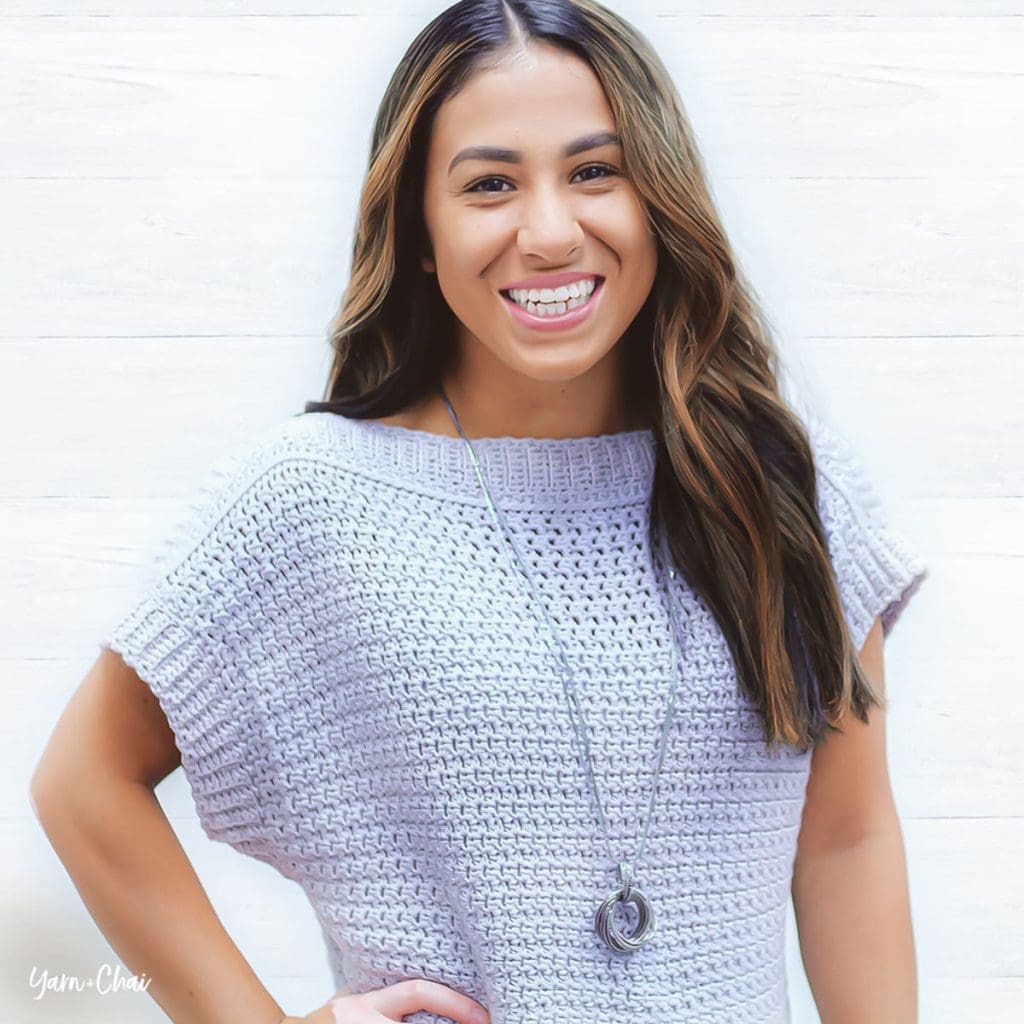
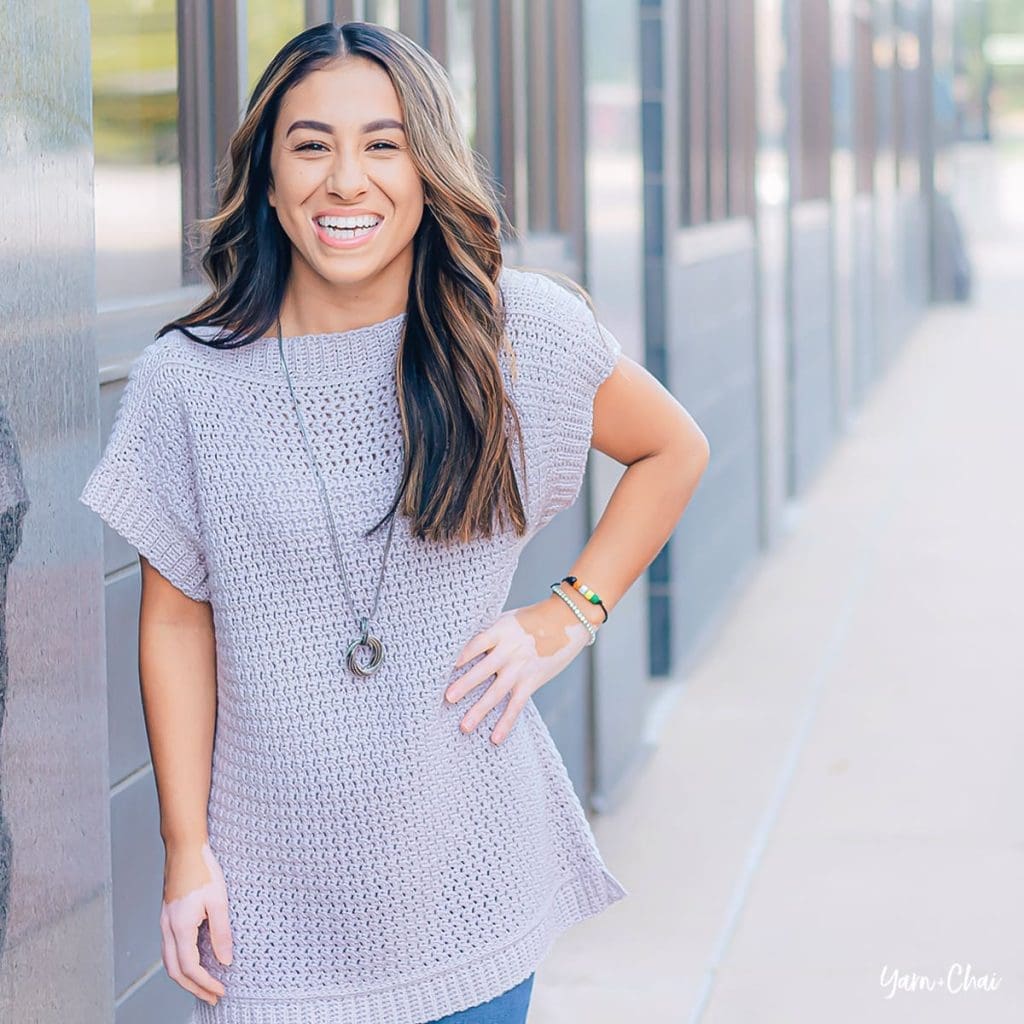






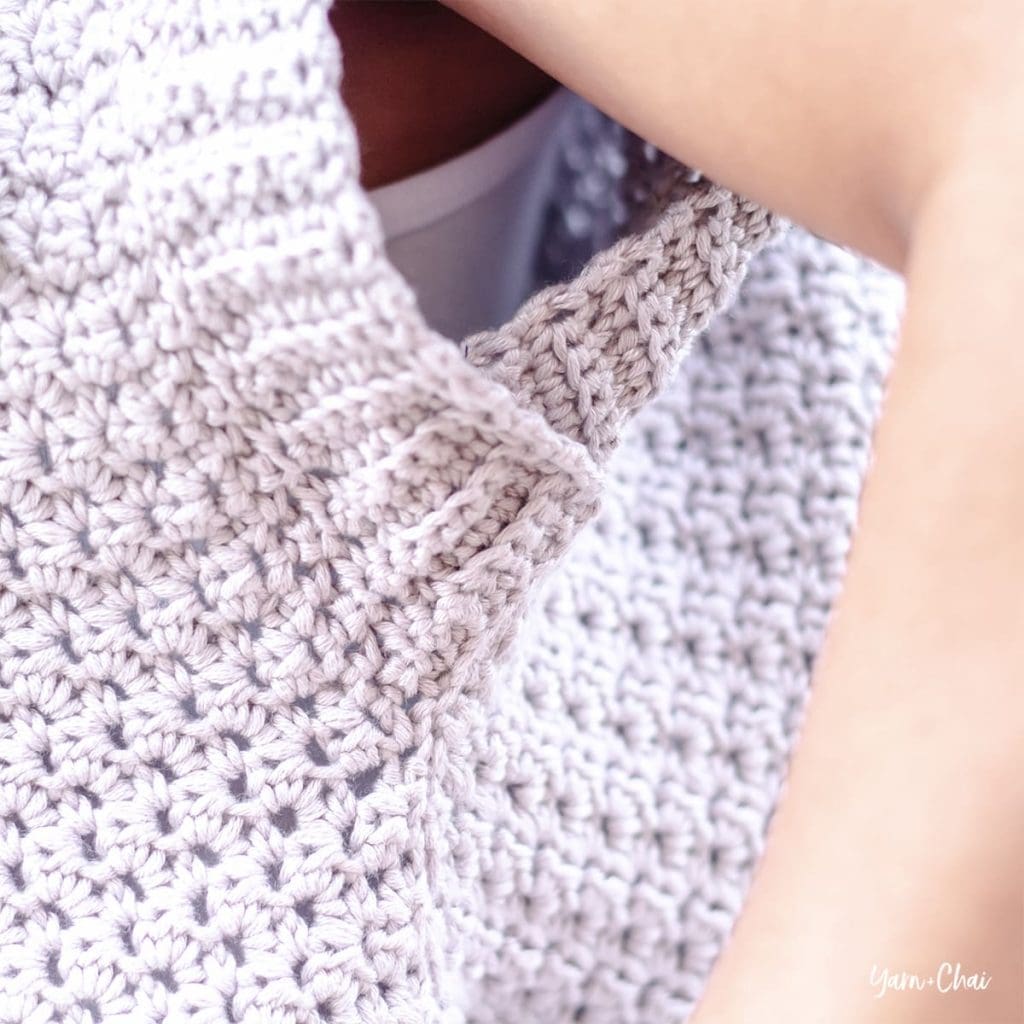












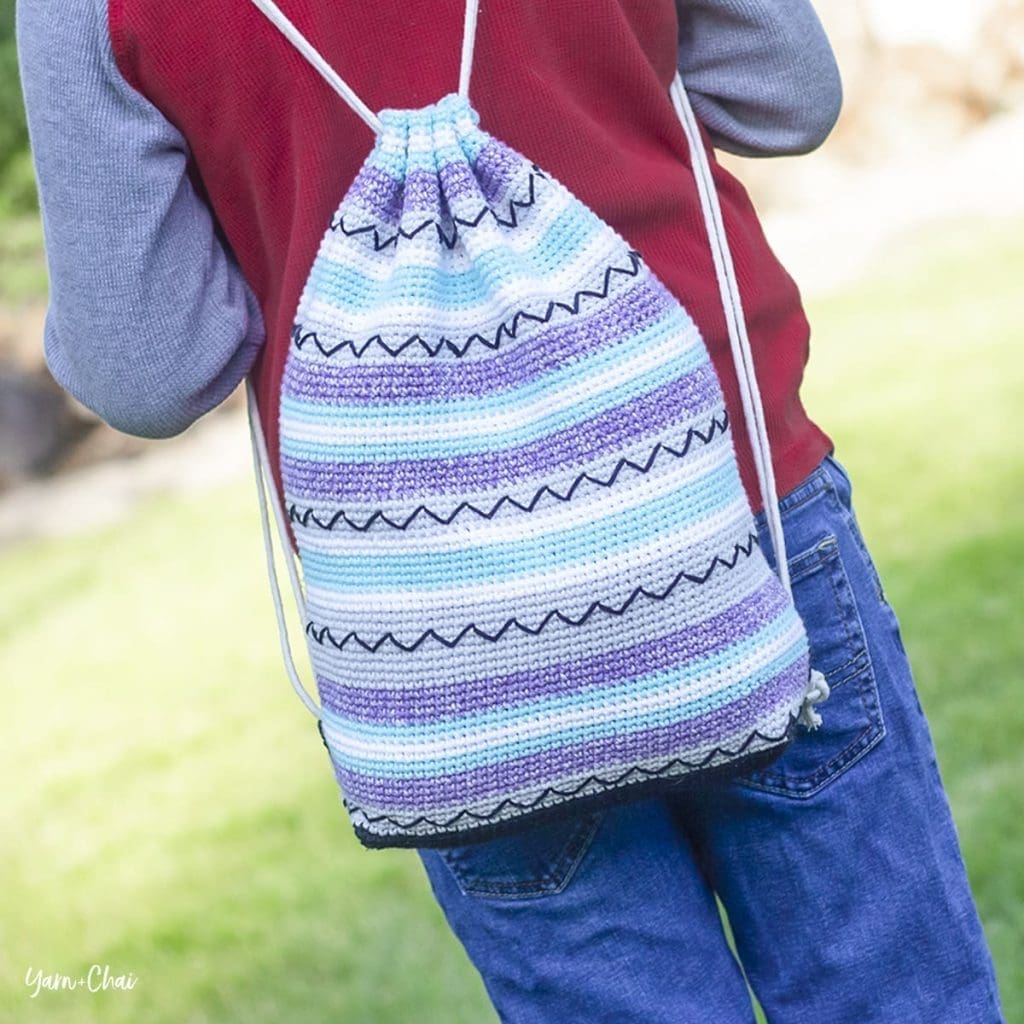
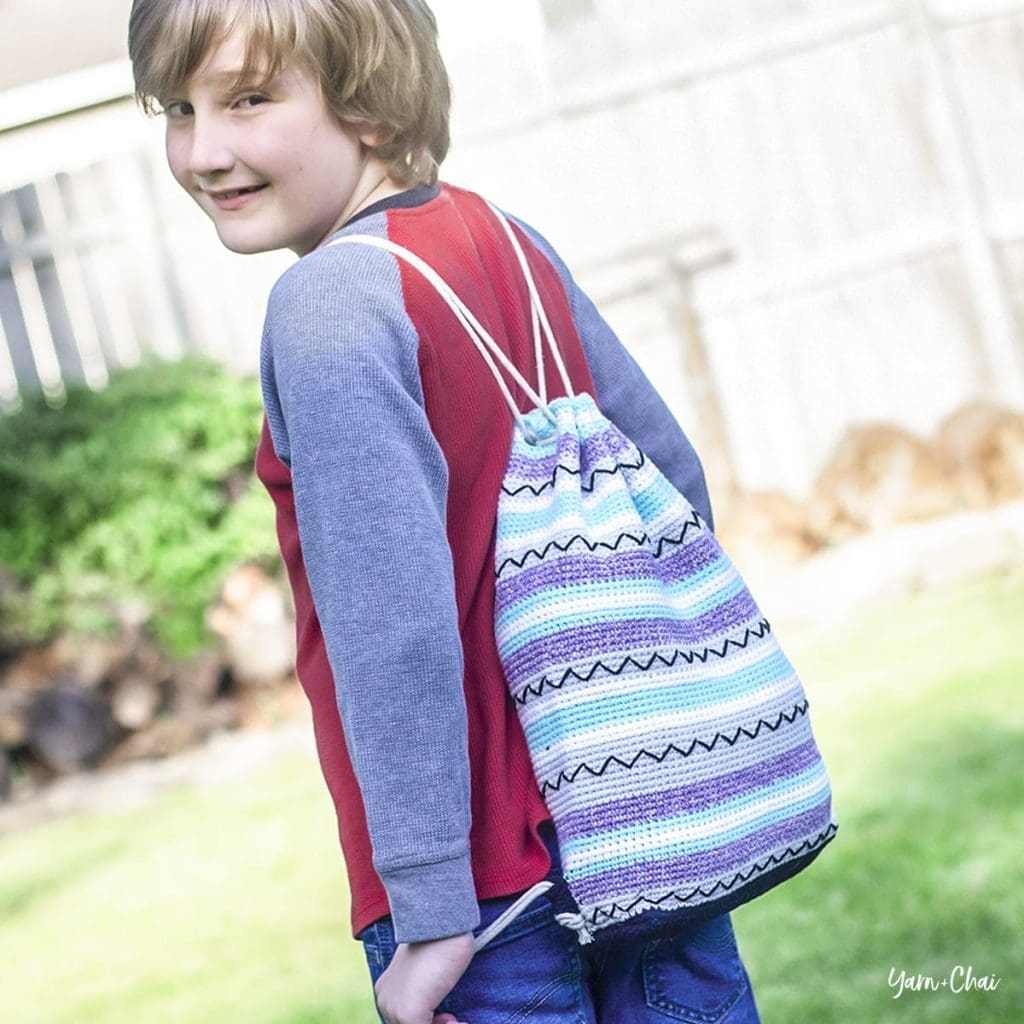
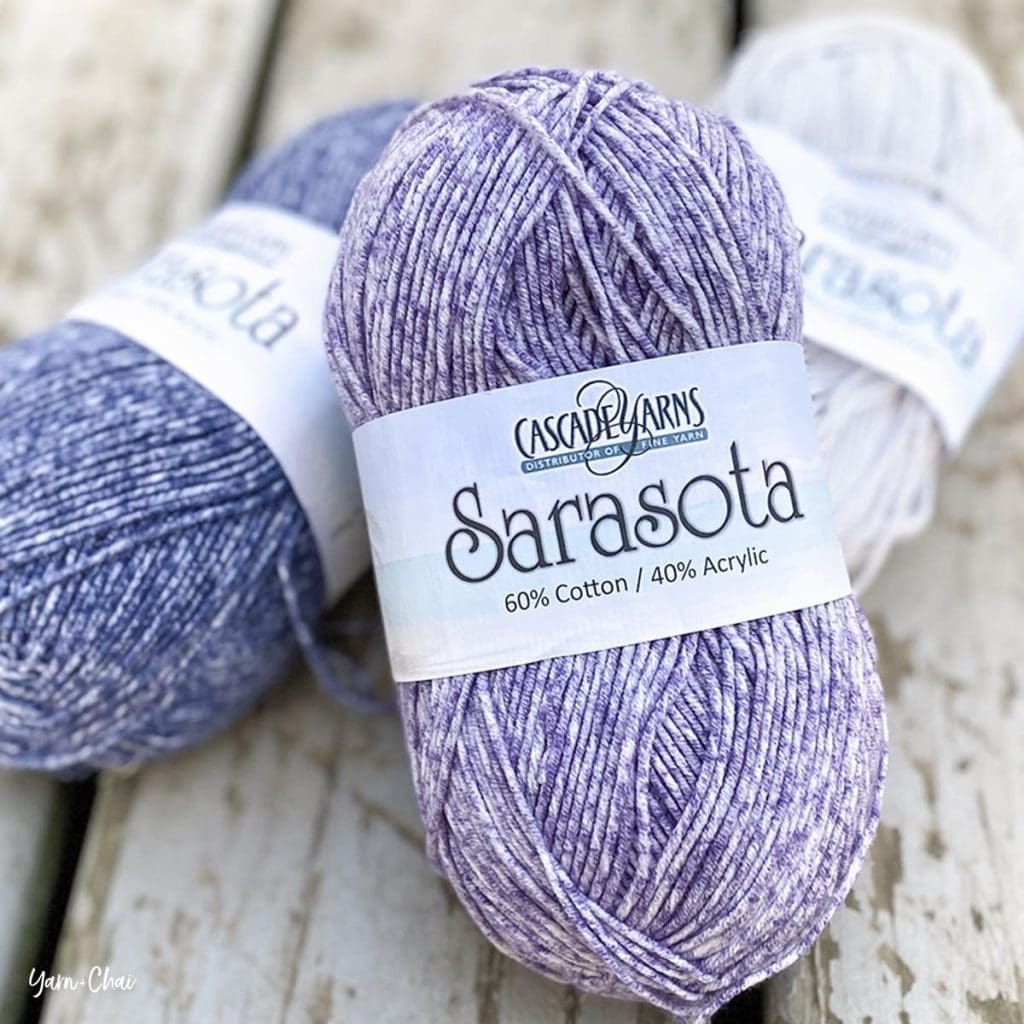
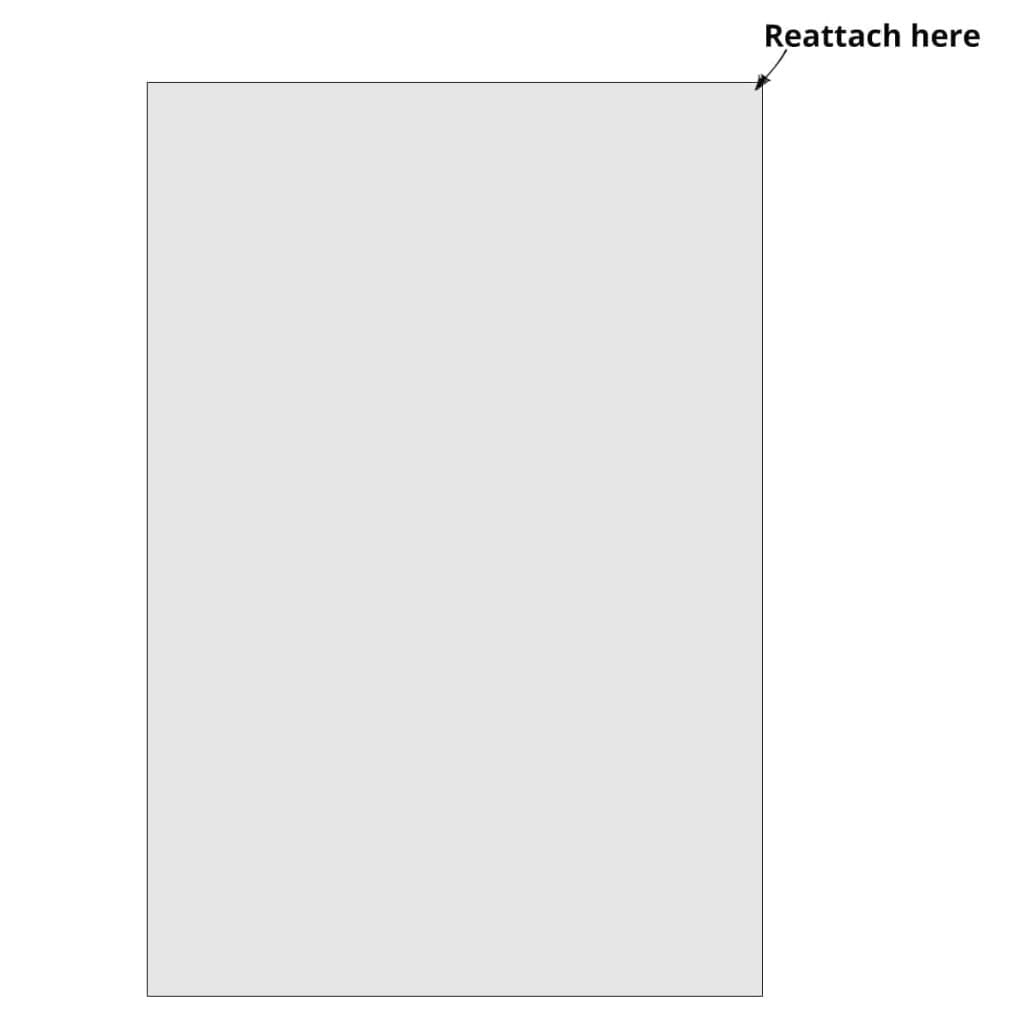

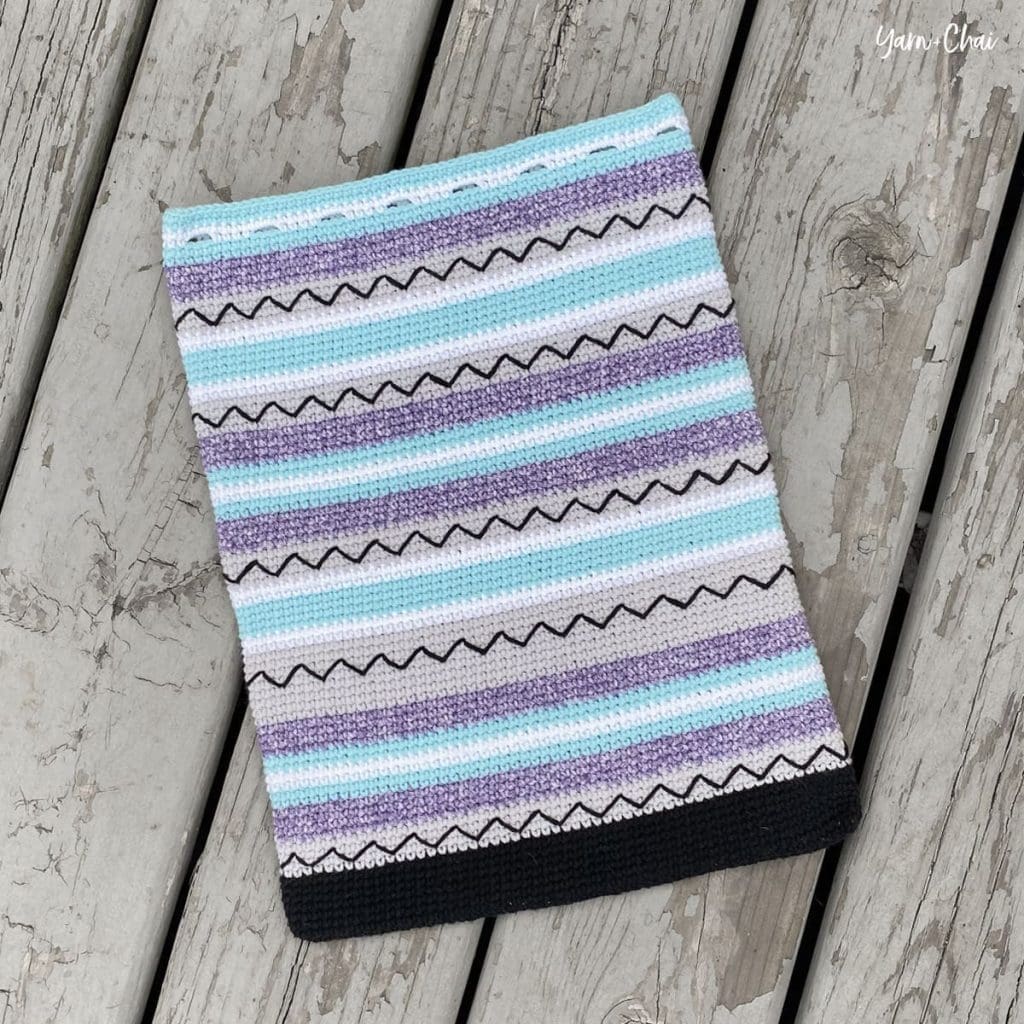


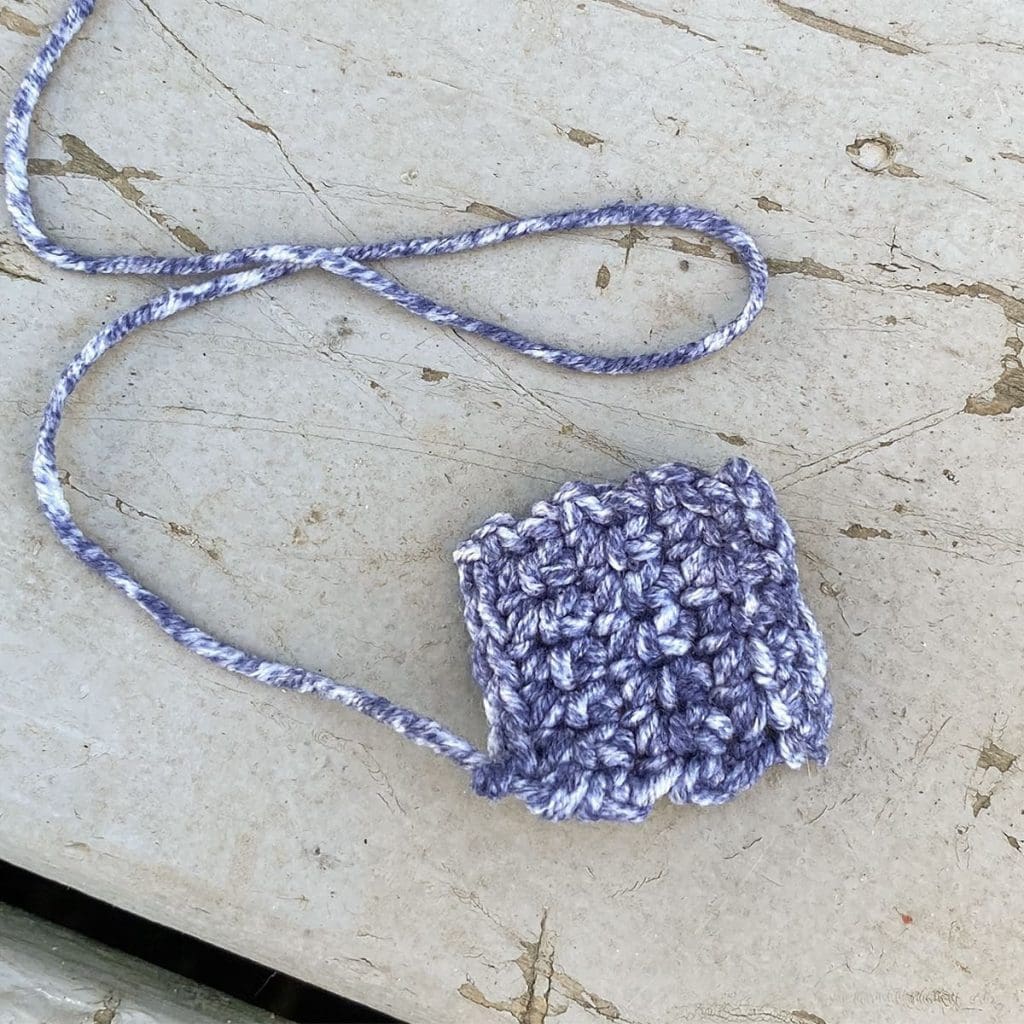
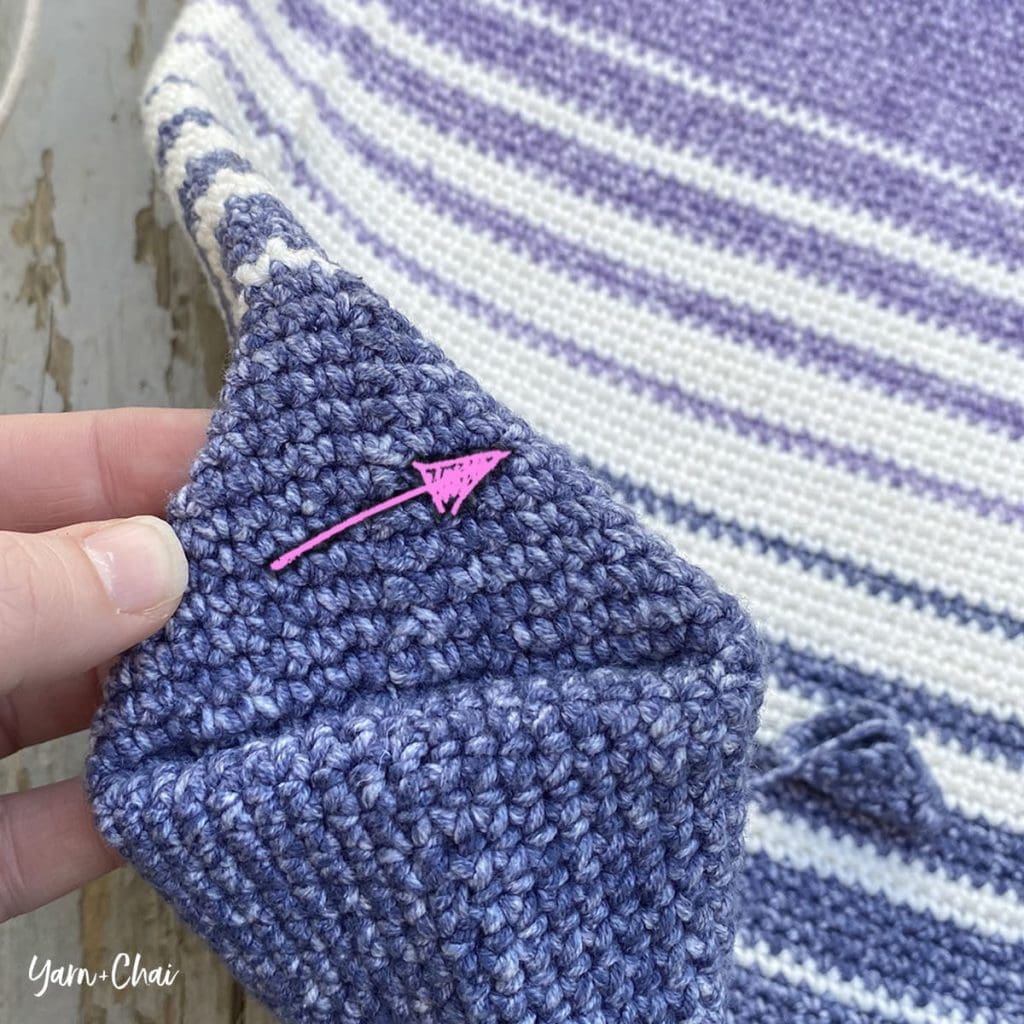
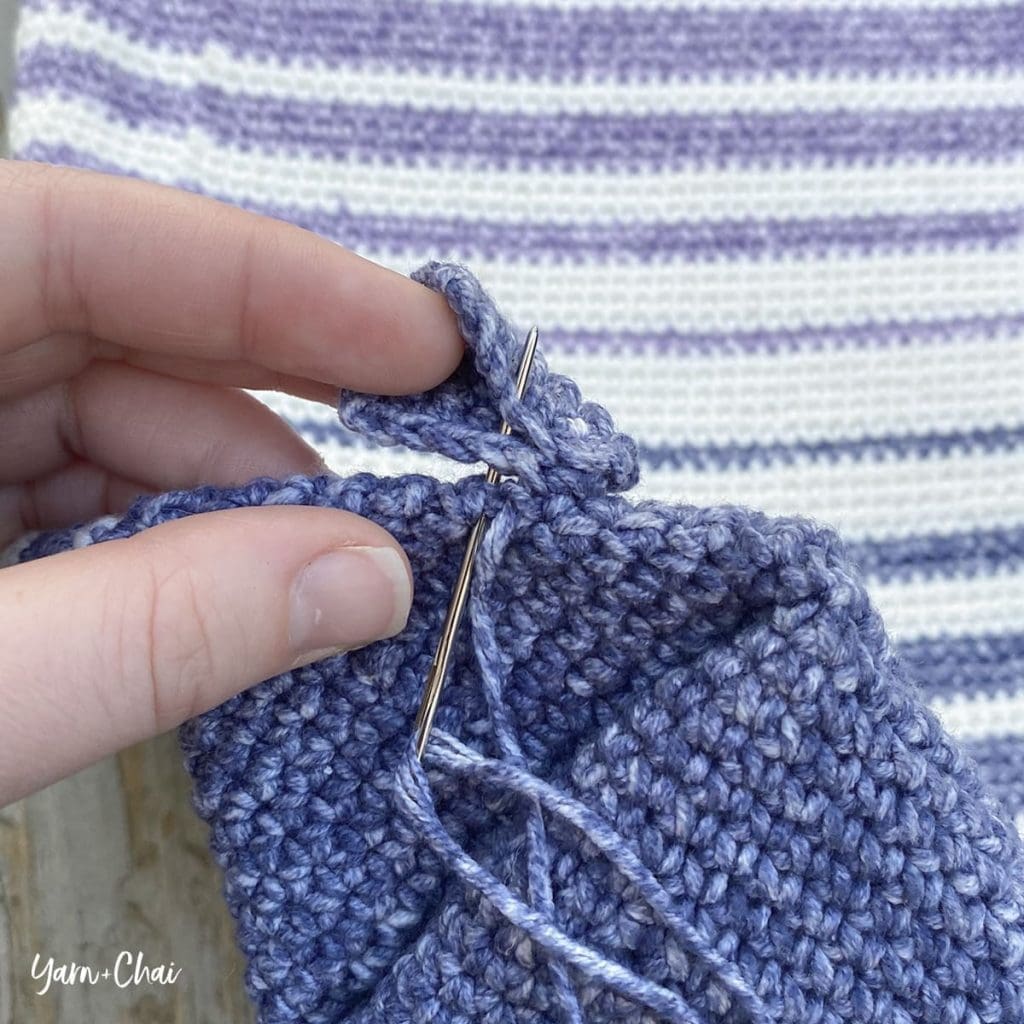

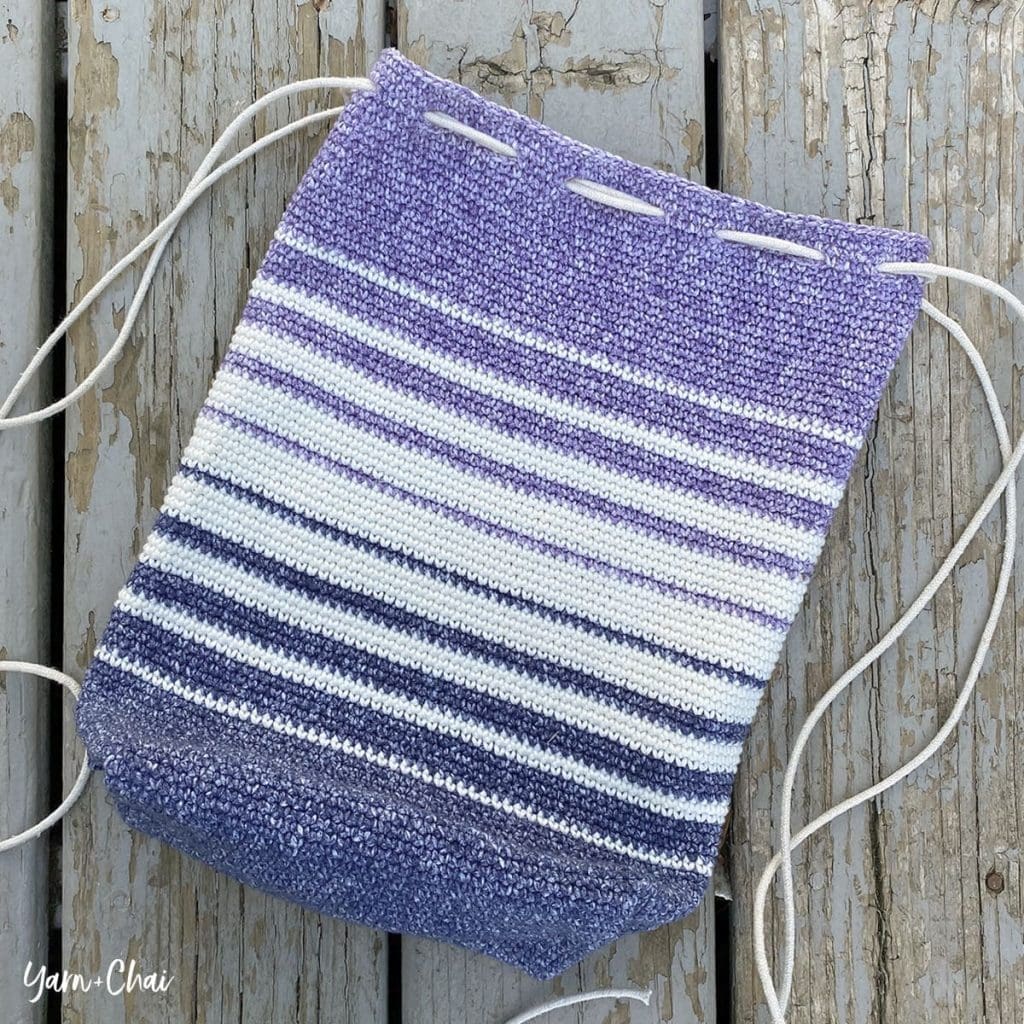
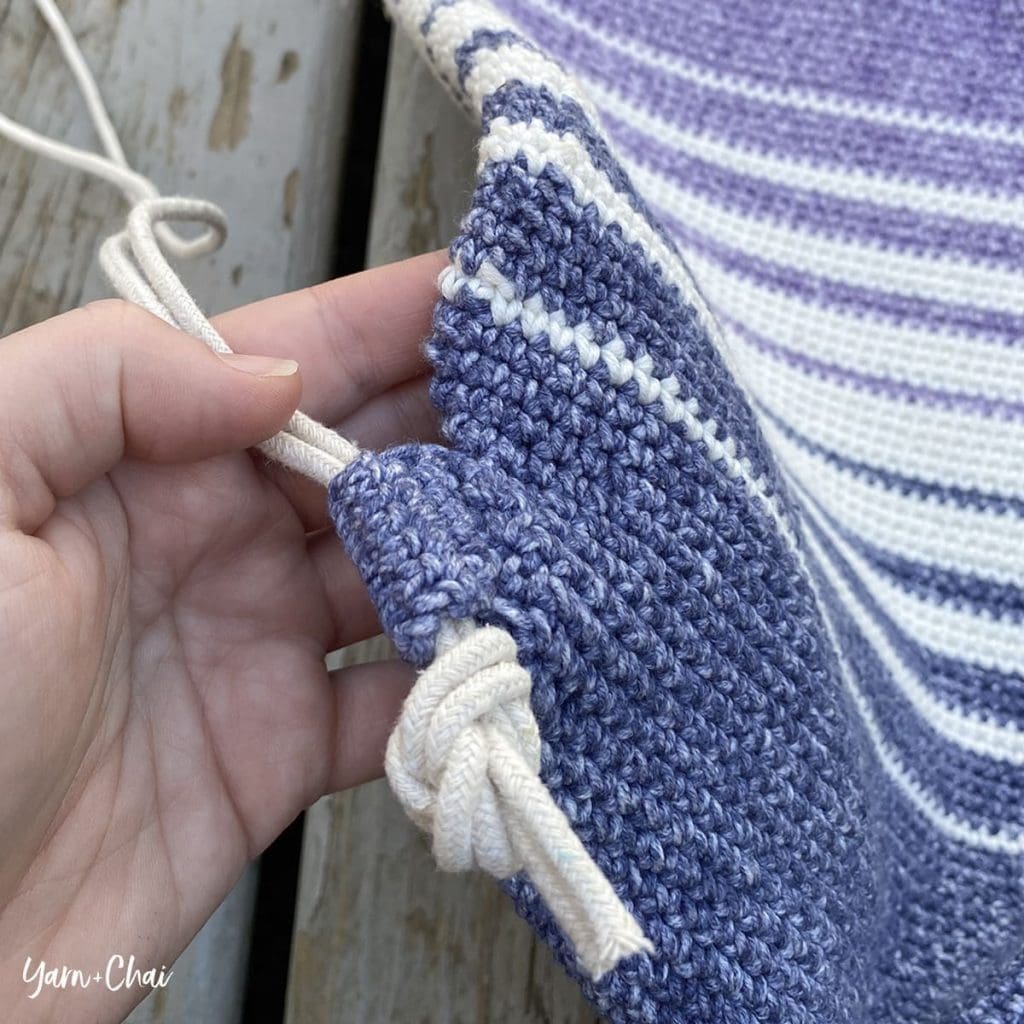
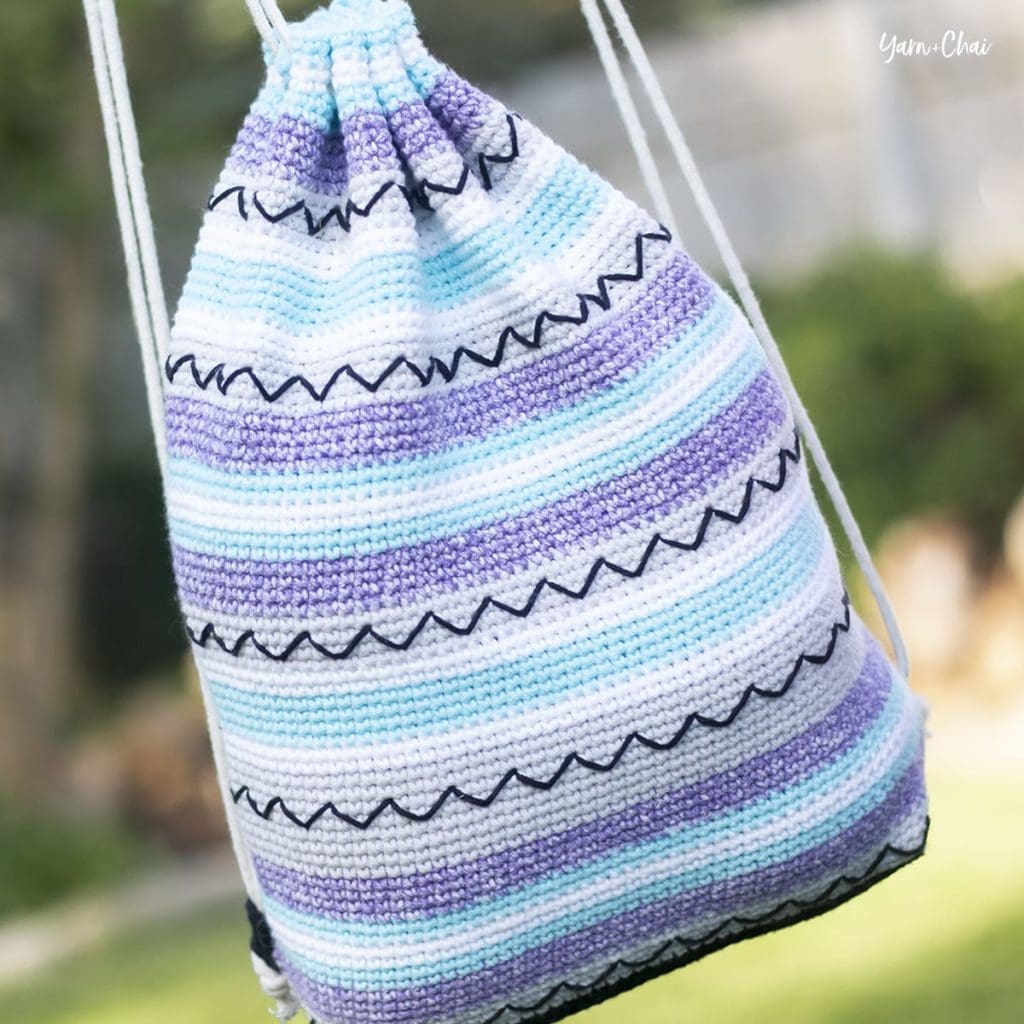

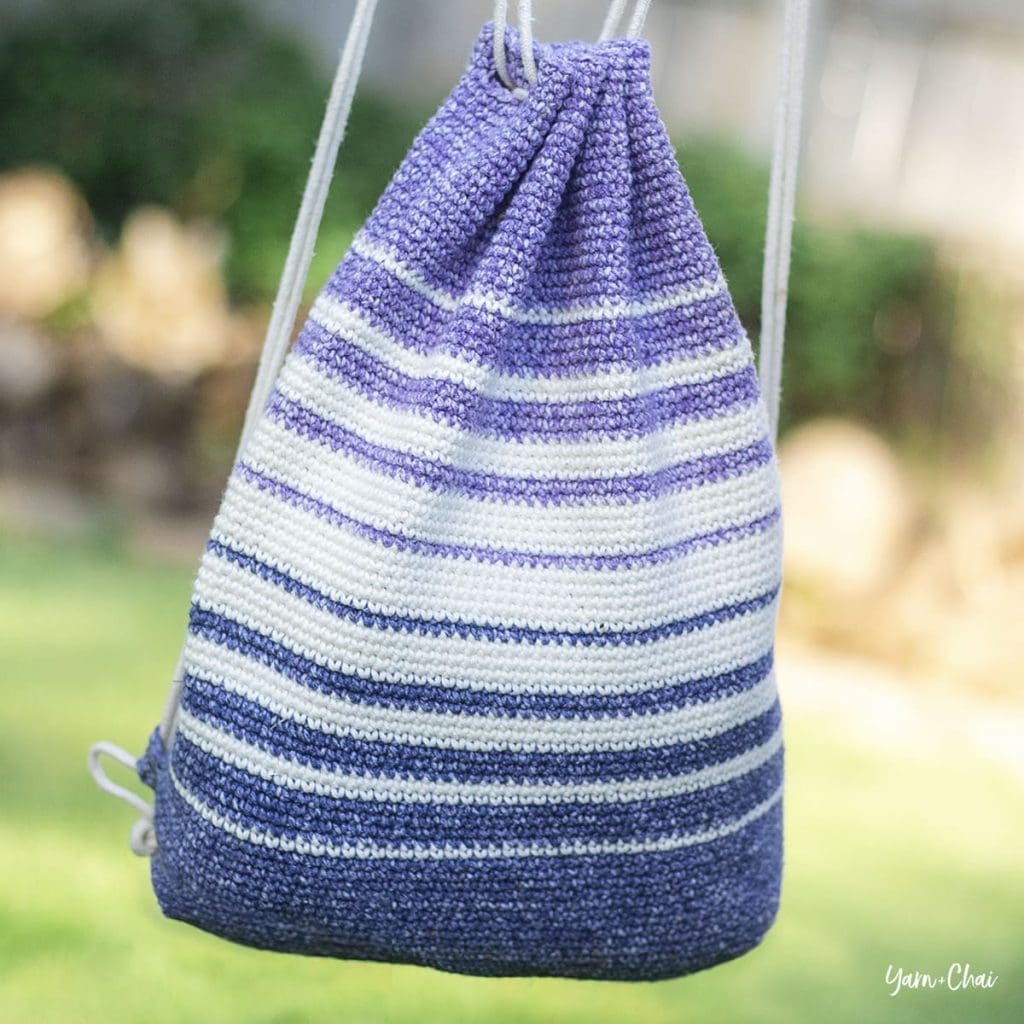
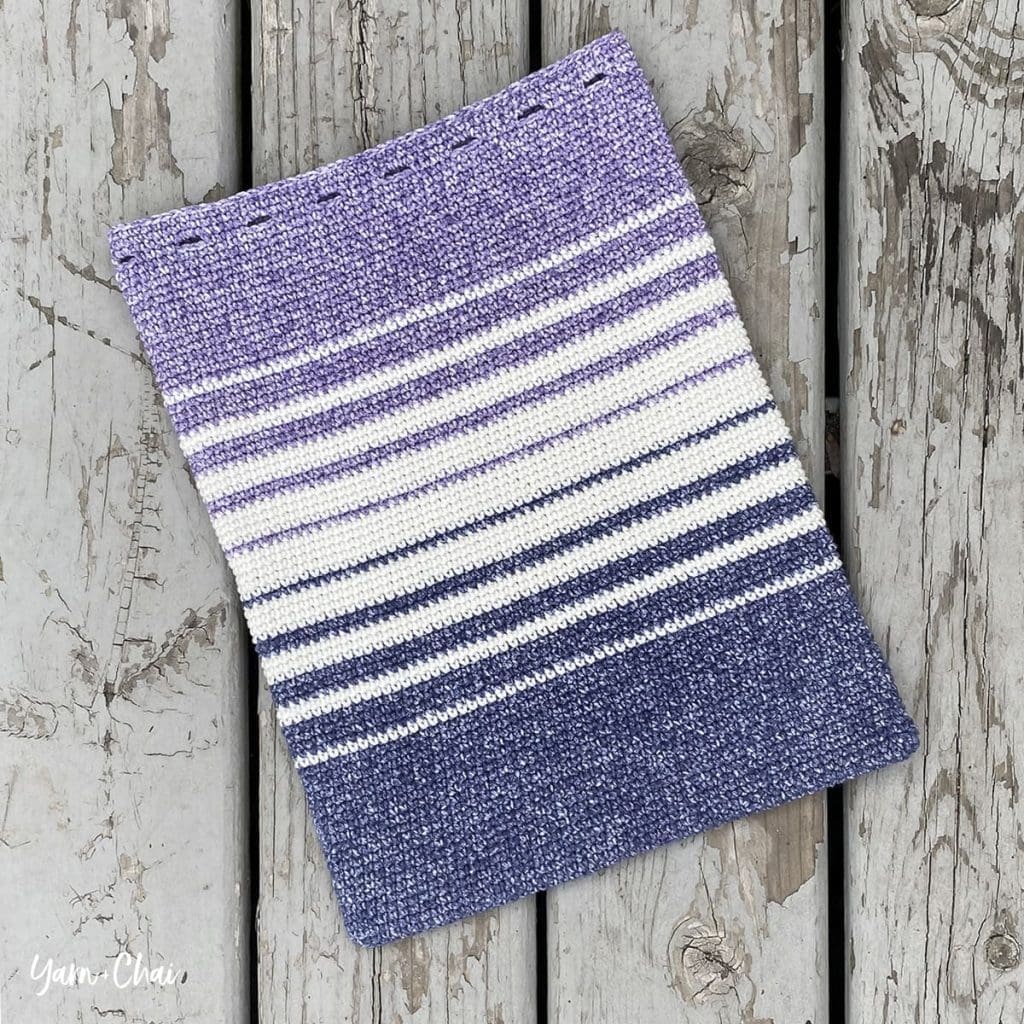
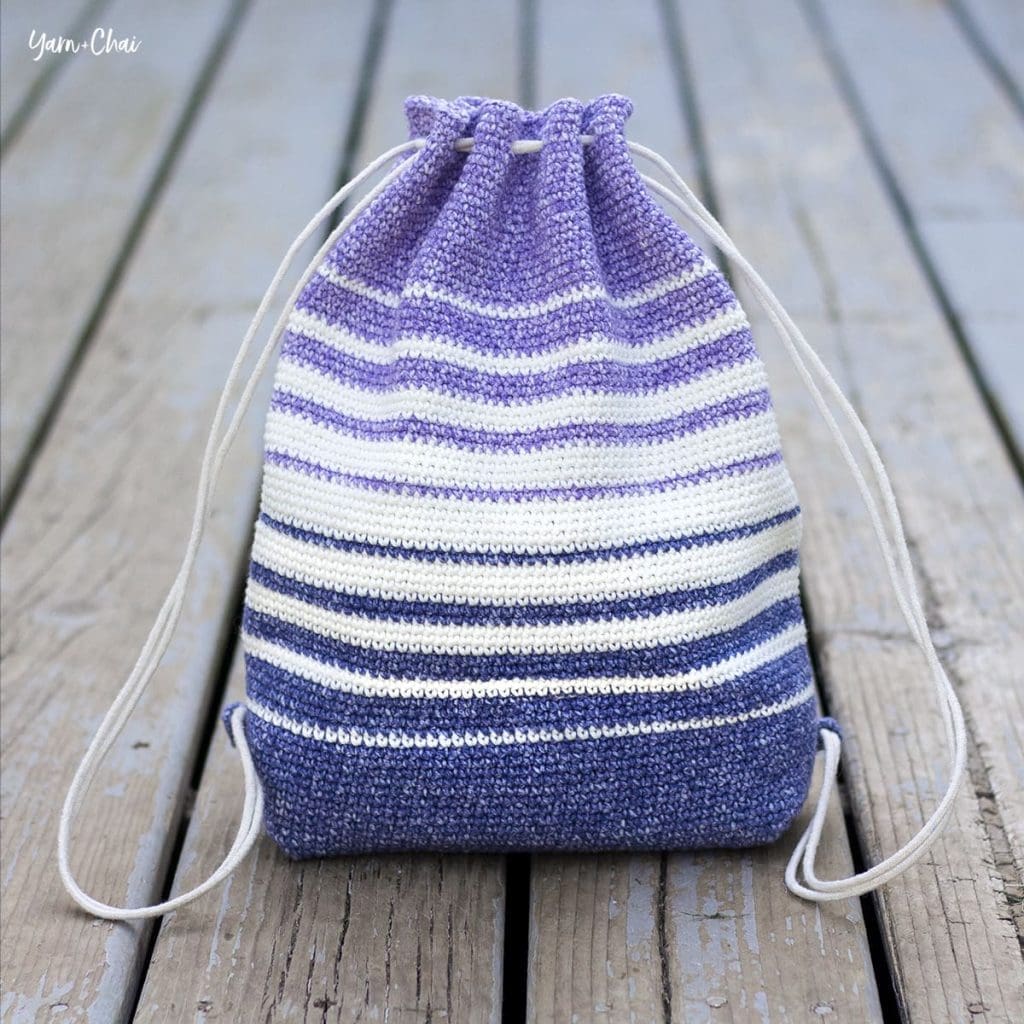

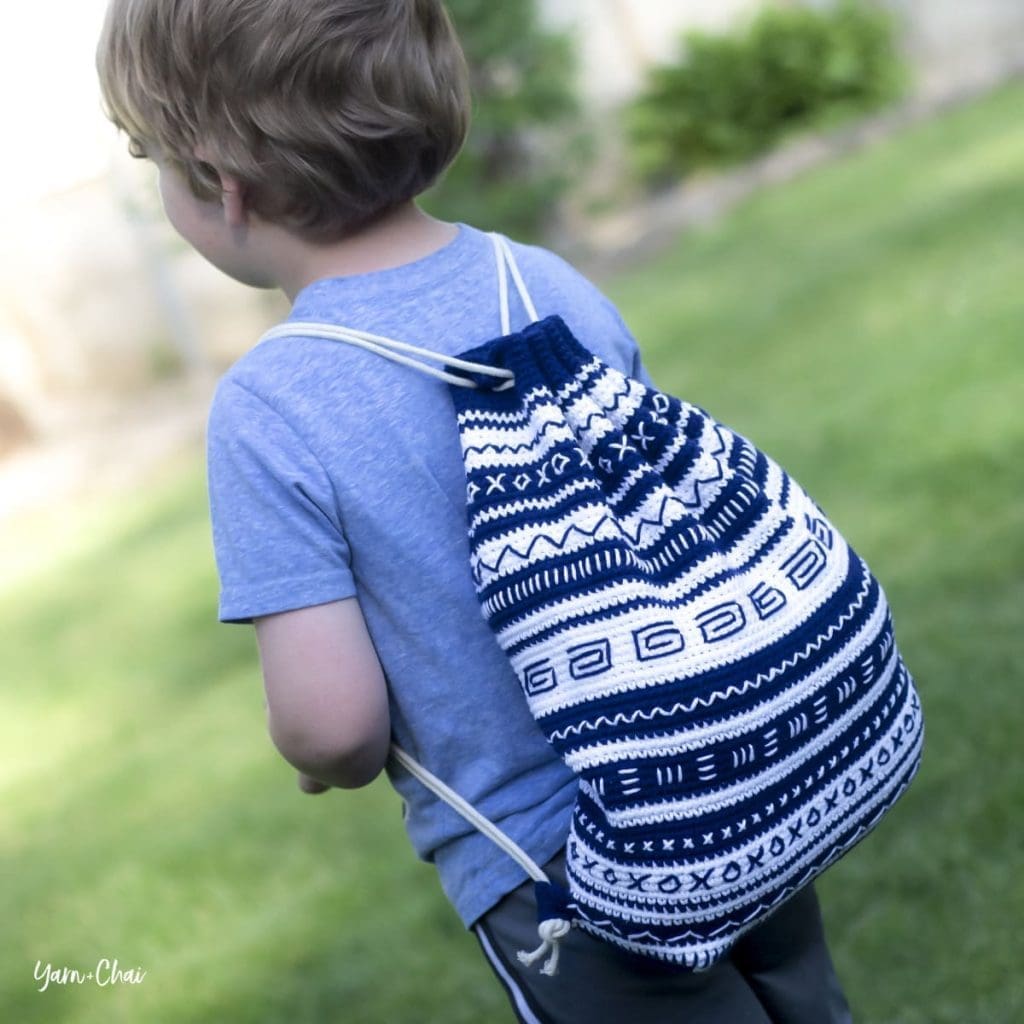
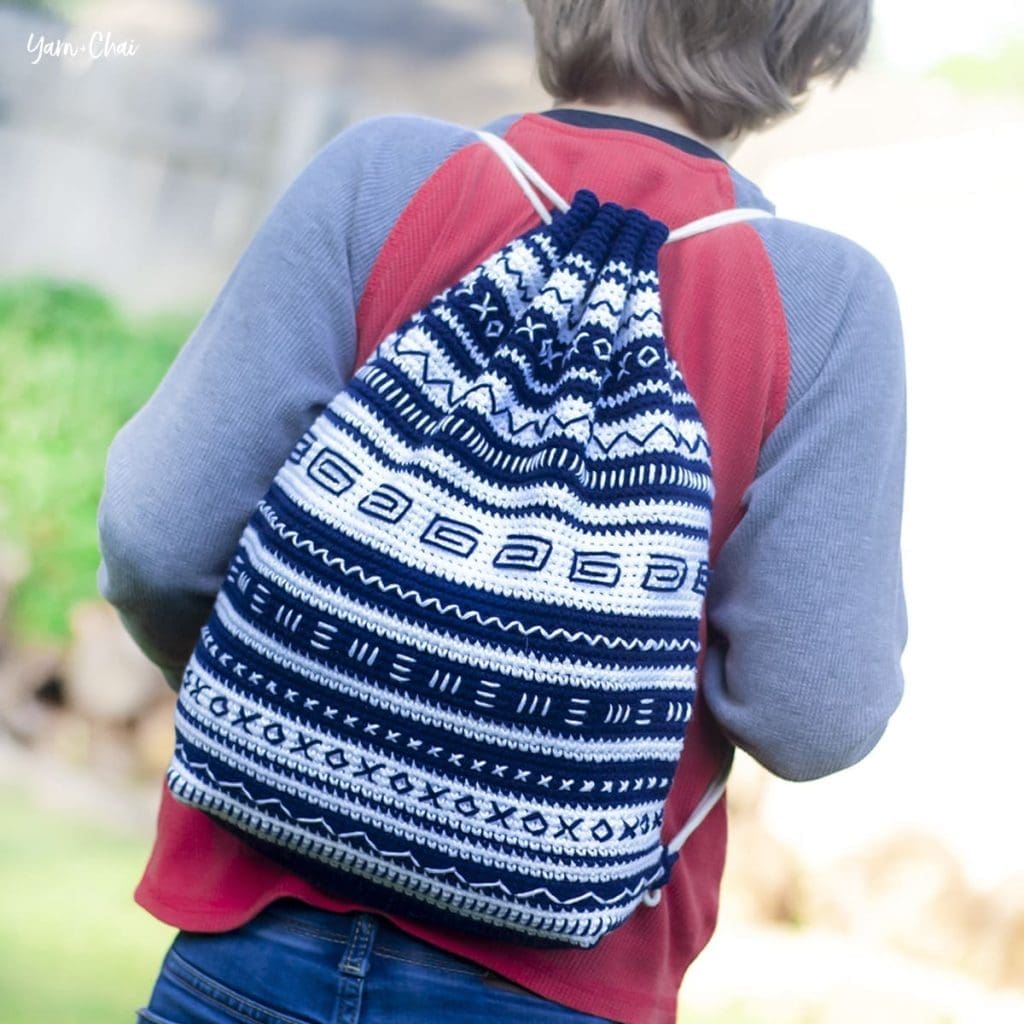
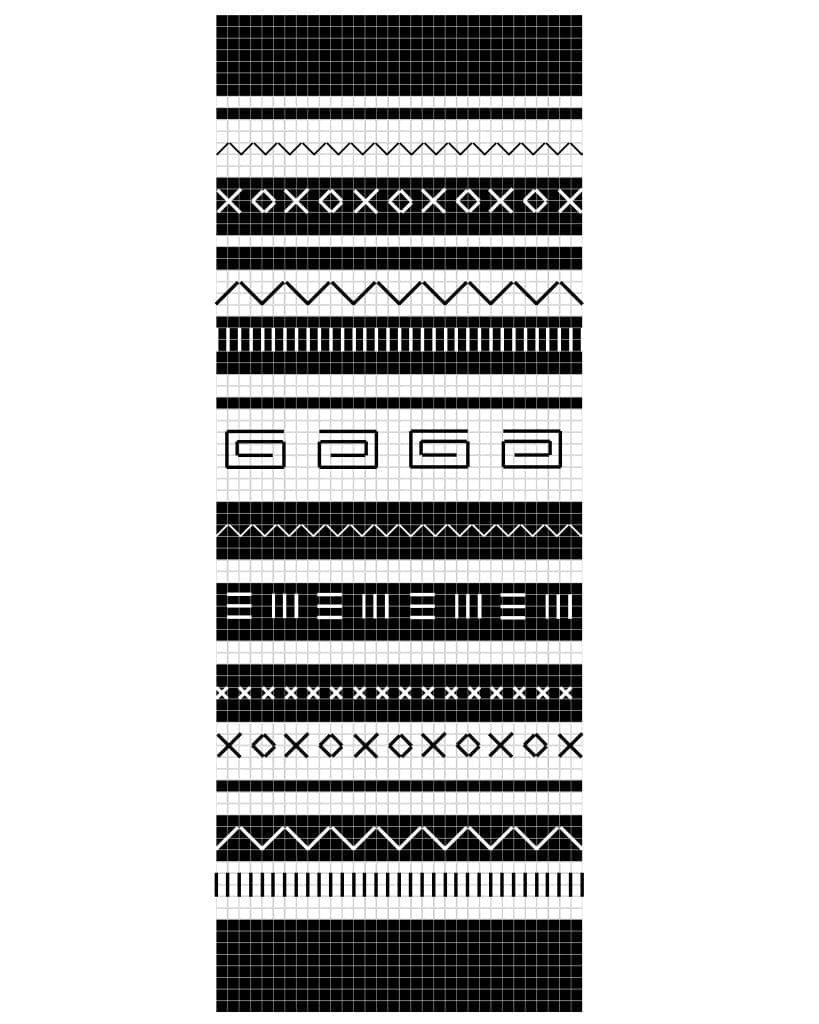
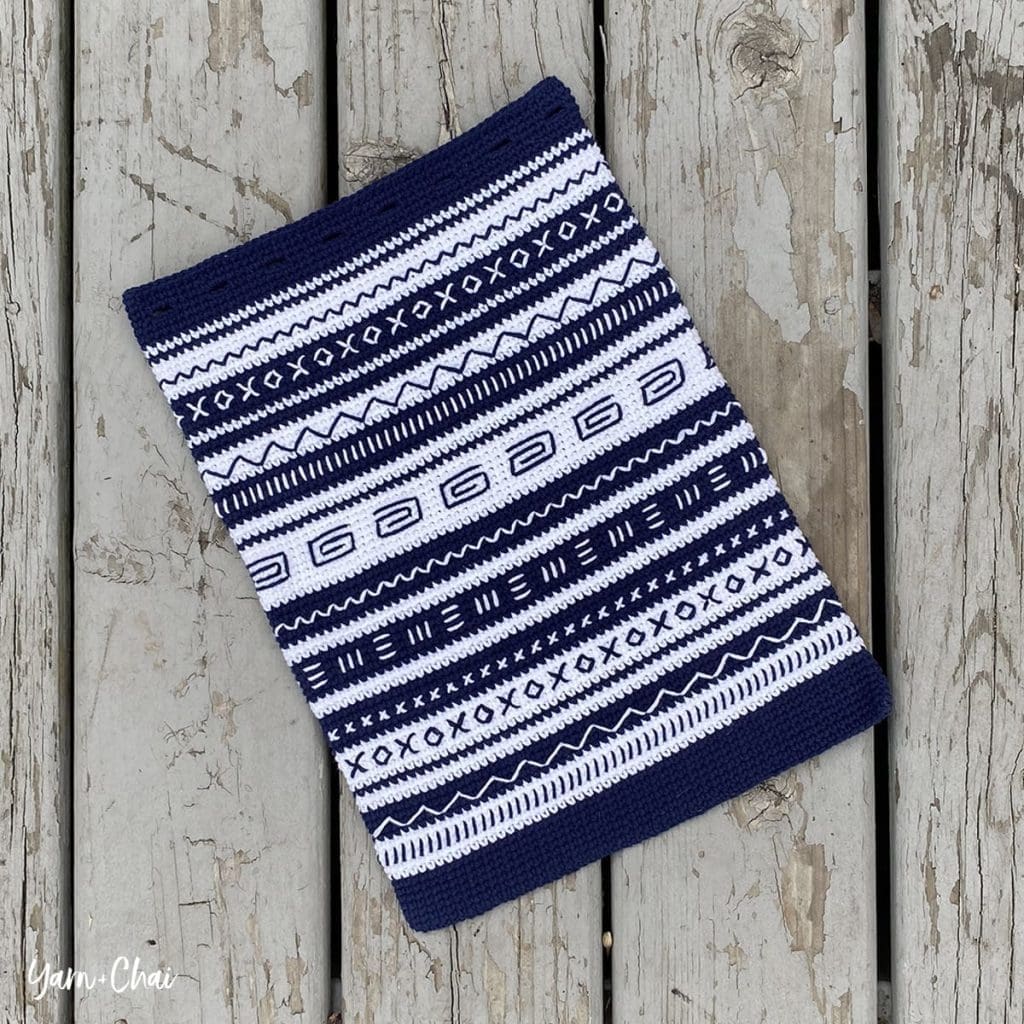
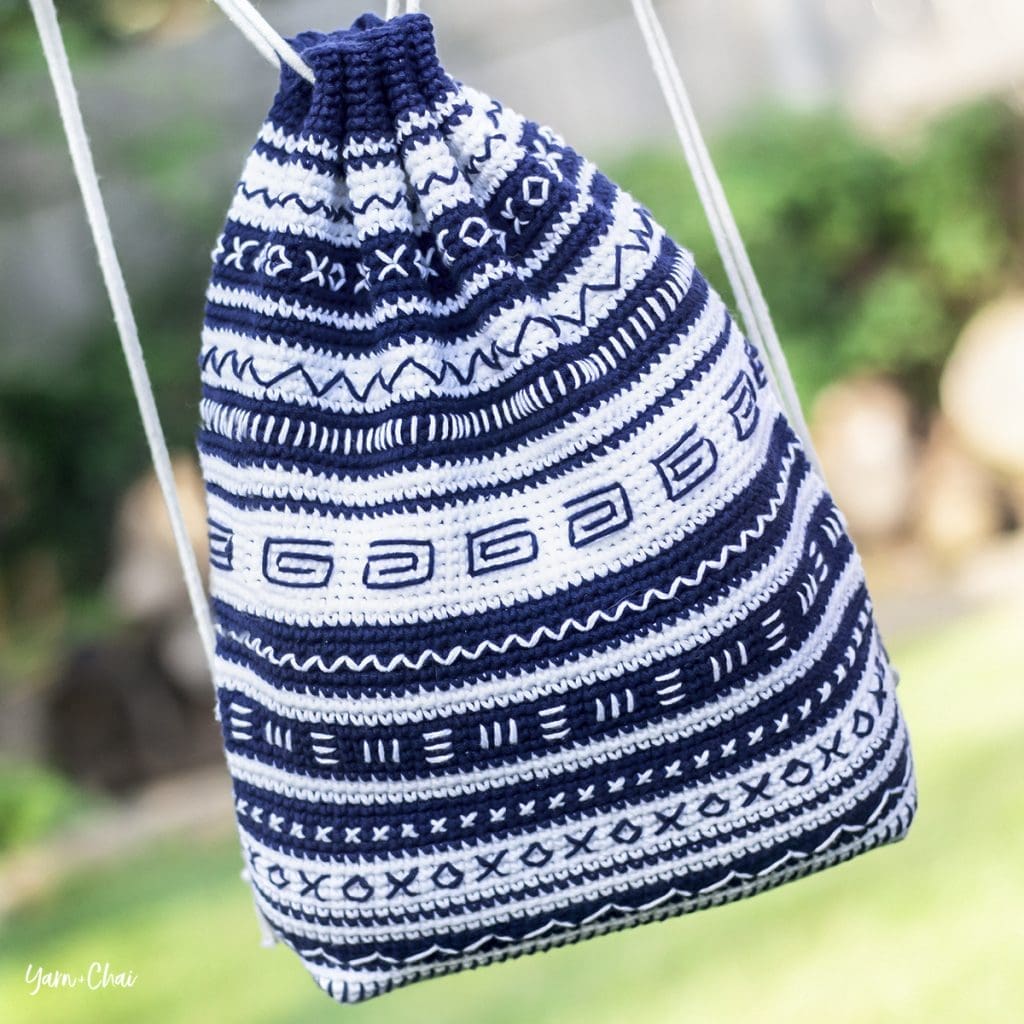



















 Hook
Hook
 For this panel, you’ll crochet 7 color blocks of 28 (sizes XS-L) or 29 (sizes XL-5XL) rows per block. There are no increases or decreases.
For this panel, you’ll crochet 7 color blocks of 28 (sizes XS-L) or 29 (sizes XL-5XL) rows per block. There are no increases or decreases.  For these panels, you’ll crochet 7 color blocks of 28 (sizes XS-L) or 29 (sizes XL-5XL) rows per block. There are no increases or decreases.
For these panels, you’ll crochet 7 color blocks of 28 (sizes XS-L) or 29 (sizes XL-5XL) rows per block. There are no increases or decreases.  For the sleeves, you’ll begin with COLOR B and crochet 3 color blocks of 28 rows per block, with decrease rows scattered throughout, before adding ribbing at the end. As a reminder, a decrease row is: CH2 (counts as first CH1 space), turn. SC2TOG over first 2 CH1 spaces. (CH1, SC in next CH1 space) across.
For the sleeves, you’ll begin with COLOR B and crochet 3 color blocks of 28 rows per block, with decrease rows scattered throughout, before adding ribbing at the end. As a reminder, a decrease row is: CH2 (counts as first CH1 space), turn. SC2TOG over first 2 CH1 spaces. (CH1, SC in next CH1 space) across. For the pockets, you’ll simply crochet two rectangles with Color A. Easy!
For the pockets, you’ll simply crochet two rectangles with Color A. Easy!
